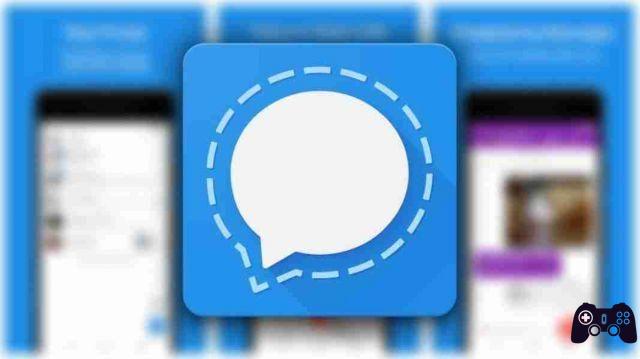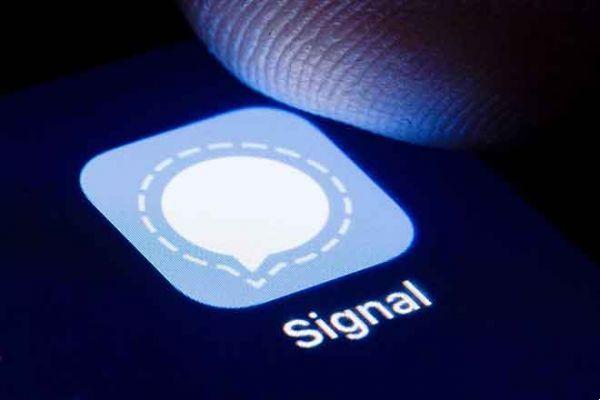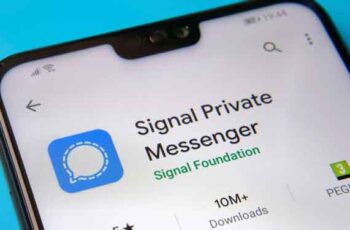
With the advent of apps like Signal and Telegram, users constantly using these private messaging apps, the polarity of perspectives has become more evident than ever. On the one hand, apps like WhatsApp are boldly entering into privacy agreements to bolster their user base for continued use; while on the other hand apps like Signal and Telegram are embracing the need for privacy and encryption now more strongly than ever.
This intent is also deeply reflected in their actions, whether it's Telegram's payment methods or Signal's encryption capabilities. In this article, we will delve into one of these Signal features that definitely gives it an edge over all other apps on the market: Sealed Sender in Spanish Sealed Sender.
- The 9 best Signal Messenger privacy settings you should use
The issue of privacy in messaging apps
Before proceeding with the explanation of the “Sealed Sender” feature, it is important to have a basic understanding of the technical aspects of how a messaging app works.
With any messaging app, there are two crucial pieces of data traveling from one point to another. The first is the content of the message itself which contains the private conversation between the sender and the recipient. The second is the metadata required by the app which contains the sender's location, sender details and other special information. The former tends to be private, with end-to-end encryption so that the messaging app doesn't invade your private information.
It is the metadata that messaging apps consider fair game, using this information for ad targeting and selling it to data companies to generate revenue. This is how profits are made and messaging apps gain value over time. The greater the number of users, the greater the amount of this type of data available to them. So your metadata is a valuable asset that requires protection.
- 17 best tips and tricks for using Signal like a pro
What is the Sealed Sender feature?
Signal is strongly intent on establishing itself as a pioneer in terms of maintaining user privacy and protecting user data at any cost. As this app is not profit-driven and is deeply concerned with maintaining and protecting user privacy, it is introducing features that will help it maintain its ethics successfully. One of them is the Sealed Sender feature.
This feature will reduce the information that is mandatorily made available to any messaging app or service. This includes information in metadata such as sender name, user's location, profile information, etc.
Like a sealed envelope, the function hides the sender information such as their name and location in an encrypted package which will not be stored on the app server. The server will only know who the message should be sent to and the message can only be sent if the sender has the delivery token / recipient ID, i.e. the person must be a verified contact number or Signal profile, a way to send anonymous messages on Signal.
How does Sealed Sender work on Signal?
Faced with all of this, you won't notice any difference in how you send and receive messages on Signal. In fact, Sealed Sender is automatically enabled between you and another user as long as you have shared your Signal profile with them and vice versa. So there are no settings that need to be changed to activate Sealed Sender. There are, however, two options in Sealed Sender's settings that you can turn on to monitor if the feature is functional.
The first is the display indicators. Enabling this feature will allow you to check if a message was sent via the Sealed Sender feature. You can enable it from the Privacy menu of the Signal app. It will be available in the Sealed Sender section of the Privacy menu.
Once this feature is enabled, you will see this envelope icon next to the name of the contact you sent the message to. Note that this icon will only appear in the information of the messages you have sent. Messages you've received from others will appear normally, without the Sealed Sender icon.
If you feel comfortable receiving sealed messages from people who are not on your contact list (advertising companies, businesses), you can also enable the Allow from anyone option.
This way, users outside of your contact list will be able to send you messages via the Sealed Sender feature. Signal will not store any information regarding the who and where of these interactions.
Should you enable Sealed Sender on Signal?
Well, the Sealed Sending feature is automatically enabled for users who have shared their Signal profile with each other. You can also choose to specifically enable the sealed sender feature for contacts that are outside your profile by enabling the Allow anyone option as shown above.
At the end of the day, it's about how much privacy you want and satisfying your sense of security. So while some of you may find this feature excessive, others may think it's absolutely necessary. Either way, Signal is a reliable and safe app, so you don't have to worry.
The only disclaimer we would like to add is to remain wary of the Allow Anyone option. In cases like these, it's best for a third party like Signal to keep a record of who and when in an interaction between you and an unknown person.
Of course, if you don't want Signal to track who's sending you a message outside of your contact list, then it's best to disable this aspect of Sealed Sender. Keep in mind that accountability becomes crucial when anonymity is involved.
Further Reading:
- The 9 best Signal Messenger privacy settings you should use
- Telegram vs Signal: which alternative to WhatsApp is better
- What is Signal and how does it work?
- How to blur faces or parts of an image with your mobile
- 17 best tips and tricks for using Signal like a pro






